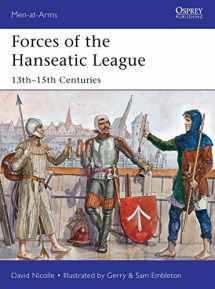
Forces of the Hanseatic League: 13th–15th Centuries (Men-at-Arms, 494)
Book details
Summary
Description
The famous but largely unchronicled Hanseatic League (or simple "the Hanse/Hansa") was a Tuetonic German commercial and defensive federation of merchant guilds based in harbor towns along the North Sea and Baltic coasts of what are now Germany and her neighbors, which eventually dominated maritime trade in Northern Europe and spread its influence much further afield. The League was formed to protect the economic and political interests of member cities throughout a vast and complex trading network. While most members remained basically subject to the local rulers who profited from their prosperity, in a sense the League might be seen as foreshadowing today's ambiguous relationship between global corporations and political nation states.
The League continued to operate well into the 17th century, but its golden age was between c. 1200 and c. 1500; thereafter it failed to take full advantage of the wave of maritime exploration to the west, south and east of Europe. During its 300 years of dominance the League's large ships - called "cogs" - were at the forefront of maritime technology, were early users of cannon, and were manned by strong fighting crews to defend them from pirates in both open-sea and river warfare. The home cities raised their own armies for mutual defence, and their riches both allowed them, and required them, to invest in fortifications and gunpowder weapons, since as very attractive targets they were subjected to sieges at various times.


We would LOVE it if you could help us and other readers by reviewing the book
Book review



